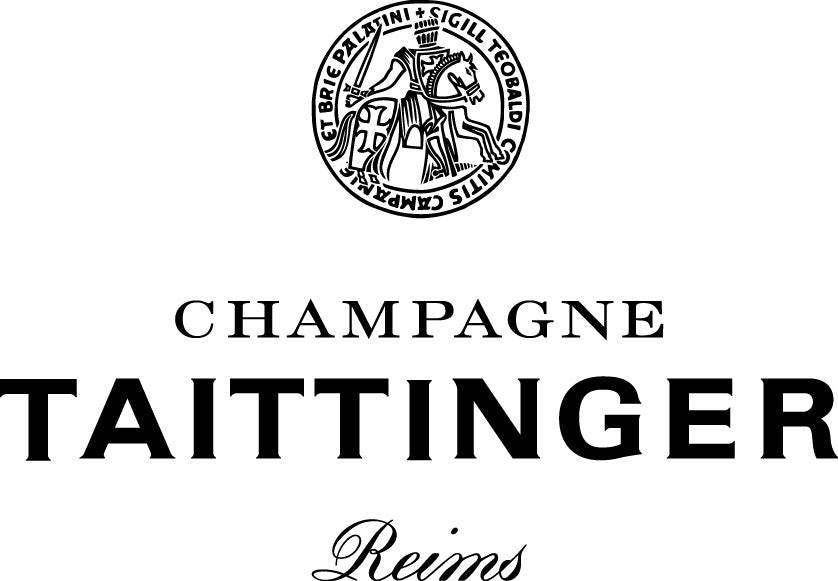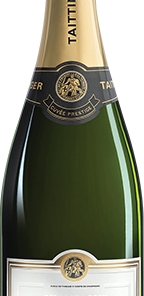Taittinger Champagne Brut La Francaise YOUNGS MARKET COMPANY
$ 57,98 $ 28,99
The Brut La Francaise is a pretty, mid-weight wine with good definition in its ripe peaches, flowers and sweet spices, and a refined, clean finish. This is an attractive, well-balanced NV Champagne to enjoy now and over the next few years. The blend is 60% Pinot Noir, 40% Chardonnay.
***
Taittinger was founded upon a promise that Pierre Taittinger made to himself in 1915 when he was a young cavalry officer serving in the First World War, with his company headquarters at the Château de la Marquetterie, two miles from Epernay near the Marne River. Captivated by the lovely 18th-century residence, the young Taittinger was determined to purchase it should the opportunity arise. By September 1930 he had acquired the venerable Champagne firm of Forest-Fourneaux, founded in 1734 and the third oldest Champagne house in existence at the time. He began to restructure the firm and to expand its vineyard holdings in some of the finest producing areas of Champagne. Two years later, Pierre Taittinger kept his promise to purchase the Château de la Marquetterie and its surrounding vineyards—as well as the Comtes des Champagne residence in downtown Reims.
INTRODUCING LIGHTNESS AND NATURALNESS
Pierre Taittinger’s philosophy proved him to be a visionary well ahead of his time. An accomplished and respected gastronome, he was among those who, during the interwar years, foresaw changing public preferences in cuisine away from the complex and often heavy traditional preparations that had long dominated the classic culinary arts. The evolution he set in motion centered on two concepts: lightness and naturalness.
Economic conditions acted as a catalyst to this change. Vast areas of the champenois vineyards destroyed during the war had to be replanted. Former primary export markets had been temporarily interrupted. Pierre Taittinger saw the opportunity to reshape the tastes of the traditional Champagne clientele who had subscribed to the old, Belle-Epoque–style Champagnes. He wagered the market would turn away from heavily dosed, sweet Champagnes in favor of natural, elegant wines expressive of their origin, just as it would reject the affront of dense, cloying sauces for pristine foods.
SETTING NEW STANDARDS
Pierre’s son, François Taittinger, set the standard for lightness and delicacy that was to become the hallmark of the Taittinger style. He was responsible for building and shaping the vineyard, allowing Taittinger to be self-supplying and to distinguish itself with the Chardonnay grape. Indeed, Taittinger has 37% Chardonnay planted in its vineyards, compared to an average in Champagne of only 27%. With his legendary master blender, Roger Lénique, François Taittinger set most exacting criteria for the quality of Taittinger’s wines. He used only fine, old Champagnes in the dosage rather than brandies or fortified wines. He restricted production exclusively to fully dry, brut Champagnes requiring flawless wines of the highest quality obtained solely from the juice from the delicate first pressing of the fruit. He ultimately attained the epitome of delicacy and elegance he desired in his cuvées through the proportionately higher use of Chardonnay, the most costly of the champenois grapes.
Today, Champagne Taittinger is run by Viatlie and Clovis Taittinger, the great-grandchildren of the founder.
Quick Shipping and Professional Packaging
Because of our long-standing relationship with UPS FedEx DHL, and other major global carriers, we are able provide various shipping options. Our warehouse staff will package each item according to our strict requirements. Your products will be subjected to an extensive inspection and be properly packaged prior to being delivered. Every day, we deliver to thousands of customers in many countries. This shows how we're dedicated to becoming the biggest retailer online in the world. The warehouses and centers for distribution are located in Europe and the USA.
Orders that contain more than 1 item are assigned processing times in accordance with the item.
Prior to shipping, we examine the items ordered thoroughly. The majority of orders will be shipped within 48 hours. It is expected that delivery will take between 3 and seven days.
Returns
The stock market is always changing. It is not managed entirely by us, since we're involved with several parties such as the factory and the storage. So the actual stock may alter at any time. It's possible that the inventory could run out once your order has been processed.
Our policy runs for 30 days. We cannot return or exchange your purchase when it's been 30 days from the date of purchase.
In order to be eligible for a return, your item must be unused and in the same condition as when you received it in. It must also still be in the original package.
Related products
Sparkling Wine
Sparkling Wine
Sparkling Wine
2009 Billecart Salmon Champagne Brut Rose Cuvee Elisabeth Salmon CHAMBERS AND CHAMBERS
Sparkling Wine
Sparkling Wine
2014 Tarlant Champagne Blanc de Blancs Brut Nature Argilite Amphorae FARM WINE IMPORTS
Sparkling Wine
2009 Billecart-Salmon Champagne Brut Blanc de Blancs Cuvee Louis CHAMBERS AND CHAMBERS
Sparkling Wine
2012 Taittinger Champagne Brut Blanc de Blancs Comtes de Champagne YOUNGS MARKET COMPANY
Sparkling Wine
2012 Stephane Coquillette Champagne Blanc de Noirs Brut Zero Les Cles Grand Cru MARTINES
Sparkling Wine
2010 Marguet Pere et Fils Champagne Extra Brut Sapience Premier Cru FARM WINE IMPORTS
Sparkling Wine
2015 Veuve Fourny & Fils Champagne Extra Brut Rose Vinotheque Premier Cru KERMIT LYNCH
Sparkling Wine
Sparkling Wine
2013 Veuve Fourny et Fils Champagne Extra Brut Cuvee du Clos Notre Dame Premier Cru KERMIT LYNCH





































